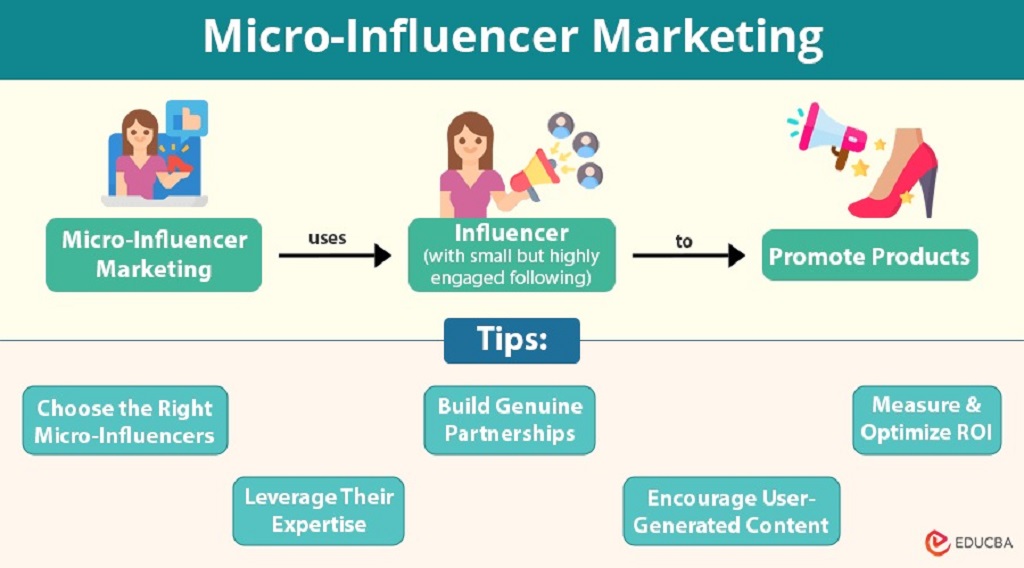In today’s saturated digital marketing landscape, brands are discovering that bigger isn’t always better when it comes to influencer partnerships. While celebrity endorsements and mega-influencers once dominated the scene, savvy marketers are now turning their attention to micro-influencers for more authentic connections with their target audiences. Companies like Hawaii Web Studio understand this shift and help brands leverage these powerful partnerships to build genuine customer relationships that drive real results.
The rise of micro-influencers represents a fundamental change in how consumers interact with branded content. These individuals, typically with follower counts between 1,000 and 100,000, have emerged as the most trusted voices in digital marketing. Their success stems from their ability to maintain authentic relationships with their audiences while delivering genuine recommendations that resonate with their communities.
Understanding the trust factor behind micro-influencers becomes crucial for businesses looking to maximize their marketing ROI. Research consistently shows that why are micro-influencers more trustworthy? stems from their authentic engagement patterns, niche expertise, and genuine connections with their followers. This authenticity translates into higher conversion rates and stronger brand loyalty compared to traditional celebrity endorsements.
The Authenticity Advantage
Micro-influencers possess a unique advantage that sets them apart from their mega-influencer counterparts: authenticity. Their smaller follower base allows them to maintain genuine relationships with their audience members. Unlike celebrities who may endorse products they’ve never used, micro-influencers typically share products and services they genuinely believe in and use regularly.
This authentic approach resonates deeply with modern consumers who have become increasingly skeptical of traditional advertising methods. When a micro-influencer recommends a product, their followers perceive it as advice from a trusted friend rather than a paid advertisement. This perception creates a powerful foundation for trust that larger influencers often struggle to achieve.
Additionally, micro-influencers often share personal stories and experiences with the products they promote. They provide detailed reviews, show real-life applications, and discuss both positive and negative aspects of their experiences. This transparency builds credibility and helps their audience make informed purchasing decisions.
Higher Engagement Rates Drive Trust
One of the most compelling reasons micro-influencers are considered more trustworthy lies in their superior engagement rates. Studies consistently show that as follower counts increase, engagement rates tend to decrease. Micro-influencers typically achieve engagement rates between 3-7%, significantly higher than mega-influencers who often see rates below 2%.
These higher engagement rates indicate active, interested audiences who regularly interact with the content. When followers consistently like, comment, and share posts, it demonstrates genuine interest rather than passive consumption. This active participation creates a community atmosphere where recommendations carry more weight and influence.
Furthermore, micro-influencers often respond personally to comments and messages from their followers. This direct communication builds stronger relationships and reinforces the trust factor. Followers feel heard and valued, which increases their likelihood of acting on recommendations from these influencers.
Niche Expertise and Specialized Knowledge

Micro-influencers typically focus on specific niches or industries where they’ve developed genuine expertise. Whether it’s fitness, cooking, fashion, technology, or parenting, these influencers have built their following by consistently sharing valuable content within their area of specialization. This focused approach allows them to develop deep knowledge and credibility within their chosen field.
Their specialized expertise makes their recommendations more valuable to their target audience. When a fitness micro-influencer recommends a protein powder, their followers trust that recommendation because they recognize the influencer’s knowledge and experience in fitness and nutrition. This expertise-based trust is difficult for generalist mega-influencers to replicate across multiple categories.
Moreover, niche micro-influencers often have personal experience with the challenges their audience faces. They understand their followers’ pain points, preferences, and concerns because they share similar interests and lifestyles. This shared experience creates a foundation of trust and understanding that translates into more effective marketing partnerships.
Cost-Effective Partnerships with Better ROI
From a business perspective, micro-influencers offer exceptional value for marketing investments. Their partnership rates are significantly lower than mega-influencers, allowing brands to work with multiple micro-influencers for the cost of one celebrity endorsement. This diversified approach reduces risk while increasing reach across different audience segments.
The lower cost barrier also enables brands to build longer-term relationships with micro-influencers. Instead of one-off posts, companies can engage in ongoing partnerships that allow for deeper brand integration and more authentic recommendations. These extended relationships feel more natural to audiences and build stronger trust over time.
Additionally, the improved ROI from micro-influencer partnerships stems from their highly targeted audiences. While they may reach fewer people overall, the quality of that reach is often superior. Their followers are genuinely interested in their content and recommendations, leading to higher conversion rates and better campaign performance.
Less Commercial Pressure and More Selectivity
Micro-influencers typically work with fewer brands simultaneously, allowing them to be more selective about their partnerships. This selectivity enables them to maintain authenticity by only promoting products and services that align with their values and audience interests. When followers see that an influencer only promotes relevant, high-quality products, trust naturally increases.
The reduced commercial pressure also means micro-influencers can take time to properly test and evaluate products before making recommendations. They’re not under constant pressure to produce sponsored content, which allows for more thoughtful and genuine endorsements. This careful approach to partnerships reinforces their credibility with their audience.
Furthermore, micro-influencers often disclose their partnerships more transparently. They’re comfortable explaining why they chose to work with specific brands and how the products fit into their lifestyle. This openness about commercial relationships paradoxically increases trust by demonstrating honesty and transparency.
Building Long-Term Relationships
The most successful micro-influencer partnerships focus on building long-term relationships rather than transactional exchanges. These ongoing relationships allow influencers to genuinely integrate products into their content naturally over time. Their audience witnesses real usage and experiences, which builds stronger trust than one-time promotional posts.
Long-term partnerships also enable micro-influencers to provide ongoing feedback about products and services. They can share updates about their experiences, address questions from their audience, and provide comprehensive reviews based on extended use. This detailed, ongoing coverage provides more value to both the audience and the brand.
These sustained relationships often evolve into genuine brand advocacy. Micro-influencers become authentic ambassadors who genuinely believe in the products they promote. This authentic advocacy is immediately apparent to their audience and creates the strongest foundation for trust and influence.
Read More Also: How to Clean Fuzzy Graphics for Crisp Designs
Conclusion
The trustworthiness of micro-influencers stems from their ability to maintain authentic relationships with engaged, niche audiences. Their genuine expertise, selective partnerships, and transparent communication create a foundation of trust that larger influencers struggle to match. For brands seeking meaningful connections with their target customers, micro-influencers offer an unparalleled opportunity to build lasting relationships and drive real business results.
The future of influencer marketing clearly favors authenticity over reach. As consumers become increasingly discerning about the content they consume and the recommendations they follow, micro-influencers will continue to play a crucial role in building trust between brands and their customers. Companies that recognize this trend and invest in meaningful micro-influencer partnerships will be best positioned to succeed in the evolving digital marketing landscape.
Read More Also: Essential Web Development Security Practices for Businesses
Frequently Asked Questions
What makes micro-influencers more trustworthy than mega-influencers?
Micro-influencers maintain closer relationships with their smaller audiences, leading to more authentic interactions and genuine recommendations. Their higher engagement rates and niche expertise create stronger trust foundations compared to celebrity influencers with massive but less engaged followings.
How many followers do micro-influencers typically have?
Micro-influencers generally have between 1,000 and 100,000 followers. This range allows them to maintain personal connections with their audience while still reaching a significant number of people within their niche market.
Why do micro-influencers have higher engagement rates?
Their smaller, more targeted audiences are genuinely interested in their content and recommendations. Micro-influencers can respond personally to comments and maintain active conversations with their followers, creating community-like engagement that larger influencers cannot replicate.
Are micro-influencer partnerships more cost-effective for brands?
Yes, micro-influencers typically charge significantly less than mega-influencers, allowing brands to work with multiple partners for the same budget. This approach diversifies risk while often delivering better ROI through higher engagement and conversion rates.
How can brands identify trustworthy micro-influencers for partnerships?
Look for influencers with consistent engagement rates, authentic content that aligns with your brand values, and genuine expertise in relevant niches. Review their previous partnerships to ensure they maintain selectivity and transparency in their collaborations.

